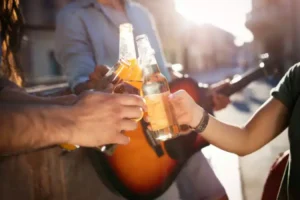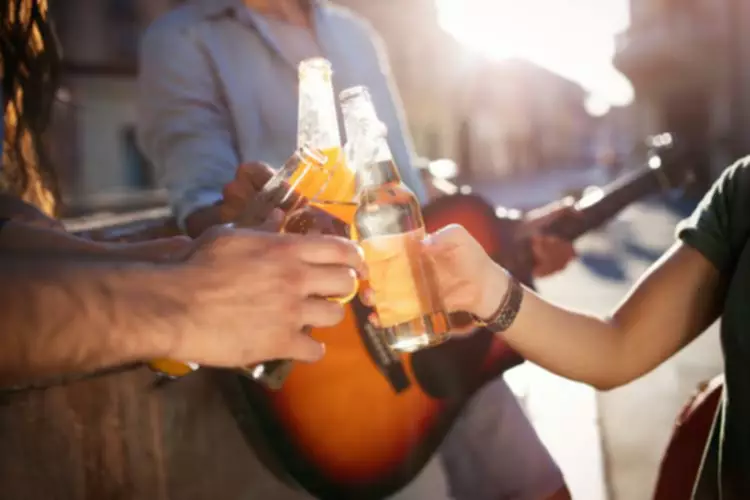
They had committed a median of three offenses in just four weeks before they were incarcerated (a reasonably high frequency in itself) but the mean was 44, implying that a subset of offenders go through sustained periods of committing low-level crime (such as shoplifting) at remorseless volumes. https://ecosoberhouse.com/ Critically, the information disseminated through the campaign was an accurate summary of what Montanans reported doing. Drunk driving is deviant behavior in Montana but young people were not aware of quite how deviant it is.
Making health care more affordable

A recent analysis of FARS data showed that the majority of deaths from alcohol-impaired driving crashes from 2000 to 2013 occurred in the South (45.6 percent), followed by the West (21.9 percent) and the Midwest (21.0 percent) (Hadland et al., 2017). In 2014 the proportion of alcohol-impaired driving fatalities (caused by drivers with a BAC ≥0.08%) among total traffic fatalities in states ranged from a high of 41 percent (Massachusetts, North Dakota, and Texas) to a low of 20 percent (Vermont), compared to a national average of 31 percent (NCSA, 2015). In many countries around the world, drinking and driving has been considered a problematic behavior that can result in automobile crashes, injuries, and even deaths. In the 1980’s, the United States saw the emergence of drunk driving as a social problem recognized by activists, the media, and finally, the general public.
White Paper Identifies Legislative Successes in Fight Against Drunk Driving, Finds Challenges Still Exist
Other states, however, may completely preempt local control over alcohol availability.22 Another alcohol-specific policy that varies from state to state is responsible beverage service and server training. As of 2016, 12 states plus the District of Columbia had mandatory service training laws, 20 had voluntary laws, 6 had a combination of mandatory and voluntary policies, and 12 had neither (APIS, 2016). In addition to the alcohol environment, the driving environment social drinking and drinking problem includes equally important considerations for changing drinking and driving behaviors and for increasing the effectiveness of policies and interventions to reduce alcohol-impaired driving. This is consistent with other research findings, which suggest that almost half of people arrested for alcohol-impaired driving are coming from a licensed establishment (Fell et al., 2010; Gallup, 2000; O’Donnell, 1985). While nationwide the number of alcohol-impaired driving fatalities increased from 2015 to 2016, a closer examination at the state level paints a more complex picture.
Investigating the impact of temporal instability in smart roadway retrofitting on terrain-related crash injury severity

Availability of alcohol to younger, often underage, populations is also widespread (Forster et al., 1995). The expansion of the alcohol beverage market by transnational producers is likely to result in increased and more widespread availability, sales, and consumption (Babor et al., 2018). Working alongside the aforementioned promotional and sponsorship activities, such market expansion has the potential to increase rates of alcohol-related problems including crashes and fatalities (Babor et al., 2018). Alcohol industry marketing strategies have become increasingly more sophisticated and pervasive in media outlets, including television and print media.
- The rate of alcohol-impaired driving fatalities in motor vehicle crashes per 100 million vehicle miles traveled, however, remained the same from 2014 to 2016 at a rate of 0.33 percent (NCSA, 2016a, 2017b).
- Furthermore, for those under 21 years of age, a 10 percent increase in the strength of a state’s alcohol policy environment was found to be correlated with a 9 percent decrease in the risk of alcohol-impaired motor vehicle crash fatalities across age and sex for both drivers and passengers (Hadland et al., 2017).
- A few of the countermeasures discussed in this chapter, such as BAC test refusal penalties, alcohol-impaired-driving law review, and DWI courts are directed at improving DWI system operations.
While 19 percent of the U.S. population lives in rural areas and rural areas account for 30 percent of total vehicle miles traveled, more than half of crash deaths occur there (FHWA, 2015; IIHS, 2016; U.S. Census Bureau, 2010). Crashes in rural areas tend to occur at higher speeds, head-on collisions are more common owing to the prevalence of two-lane roads with no median, and guardrails are less common. There are often fewer witnesses to call for help in rural locations, and help is often farther away.

Detecting driver fatigue using heart rate variability: A systematic review

It was simply considered normal – even admirable – to prosecute feuds and escalate drunken fights over honor into potential killings. These norms steadily changed, in substantial part because governments gained the capacity and desire to punish perpetrators. Blood feuds and brawls turned into ritualized duels, and eventually self-control became normal and impulsiveness deviant. It is widely argued that the honor culture of the US South helps to explain why murder rates are higher there today. This created the virtuous cycle where drunk driving became increasingly infrequent, and therefore increasingly deviant (i.e., decreasingly normal).
- In the same report the United States came in second in percentage of crash deaths involving alcohol at 31 percent (WHO, 2015a).
- Evidence suggests that driving while impaired (DWI) enforcement, such as sobriety checkpoints and saturation patrols, in combination with enforcement of speeding laws is effective at decreasing alcohol-related driving crashes and resulting injuries and fatalities (Sanem et al., 2015).
- This is precisely what you want to avoid when dealing with occasional suspects who are more worried about what is normal than what is harmful.
- While international comparisons may help to draw attention to progress made in reducing alcohol-impaired driving in similarly developed and motorized countries, there are many limitations for such comparisons (O’Neill and Kyrychenko, 2006).
- Yet academic criminologists and policymakers alike have despaired at the prospects of effectivecrime prevention.
The other key study, by Brian Bell, Laura Jaitman, and Stephen Machin – this one on severity of punishment – examined the English riots of 2011 that started, and were most intense, in London. Rioters looted shops, burned cars, and destroyed commercial and public buildings for three days before being quelled by the police. Between 13,000 and 15,000 people were involved in the riots in some form, and more than 5,000 offenses were recorded.
